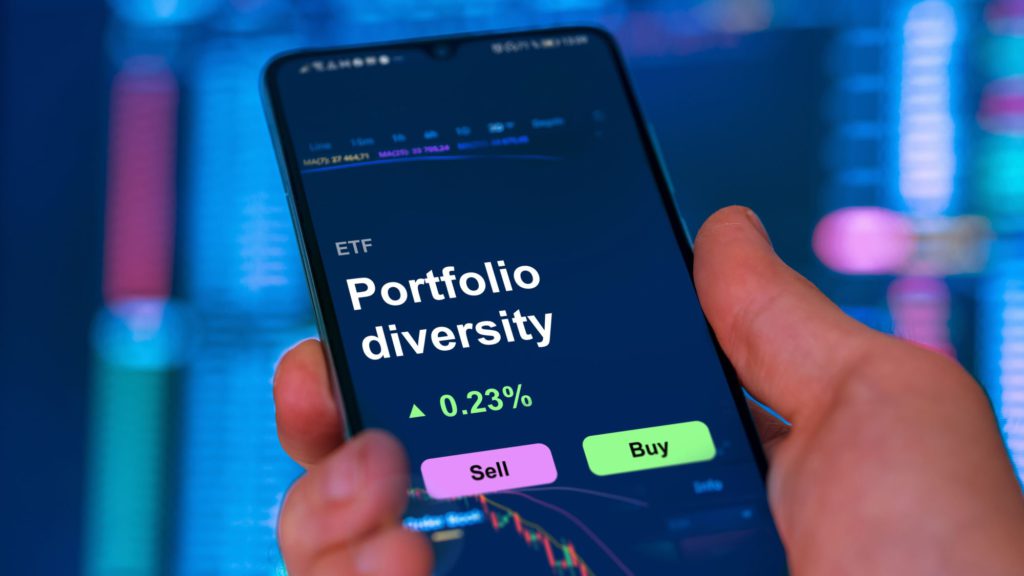Diversifying one’s portfolio is an excellent strategy to manage risk and seek potential returns. By spreading investments across various asset types and sectors, investors can mitigate the impact of market volatility and position themselves for more consistent long-term performance.
This comprehensive guide will explore a range of investment opportunities, from traditional options like stocks and bonds to emerging trends such as cryptocurrencies and startups. By examining each of these avenues, you will thoroughly understand how to build a diversified financial portfolio. You may also benefit from other reputable sources like centerforworklife.com to have a more extensive idea of portfolio diversification and financial freedom.
1. Equity Investments
Equity investments, also known as stocks, often serve as the cornerstone of investment portfolios. When an individual purchases company shares, they become a part-owner of that organization. This ownership grants them a stake in the company’s success and potential profits. Stocks offer the potential for significant returns but carry higher risks than other investment types.
Diversification within the equity sector involves investing in stocks from different industries and sectors. By spreading investments across various sectors like technology, healthcare, finance, consumer goods, and energy, investors can reduce the impact of a downturn in any single sector on their overall portfolio.
2. Cryptocurrencies
Cryptocurrencies, such as Bitcoin and Ethereum, have gained significant attention in recent years. They are digital or virtual currencies that use cryptography for security. While cryptocurrencies can be highly volatile and speculative, they have the potential for substantial returns. Investing in cryptocurrencies involves purchasing and holding digital assets with the expectation of capital appreciation.
However, it is important to note that cryptocurrencies are still relatively new and can be subject to regulatory risks and market volatility. Investors should exercise caution and consider their risk tolerance before allocating a portion of their portfolio to cryptocurrencies. To do this, you may check out sources like scamrisk.com to determine investment risks and how to avoid them.

3. ETFs And Mutual Funds
Exchange-traded funds (ETFs) and mutual funds are investment vehicles that allow investors to gain exposure to a diversified selection of securities in a single transaction. These funds pool money from numerous investors and invest in a broad range of assets such as stocks, bonds, or commodities. ETFs are traded on stock exchanges, while mutual funds are managed by investment companies. Both options offer the advantage of convenient diversification.
By investing in ETFs or mutual funds, investors can gain exposure to specific sectors and broad markets or follow certain investment strategies without the need to buy each security individually. This makes them an attractive choice for those looking for a more streamlined approach to diversification.
4. Bonds
Bonds are fixed-income securities that represent loans made by investors to entities such as corporations or governments. When an investor purchases a bond, they lend money to the issuer, receiving regular interest payments and the repayment of the principal amount upon maturity.
Bonds are generally considered to be lower-risk investments compared to stocks. They provide stability to a portfolio and offer a predictable income stream through periodic interest payments. Diversification within the bond market involves investing in different types of bonds, such as corporate bonds or government bonds, with varying maturities and credit ratings. This helps to balance risk and potentially enhance returns.
5. Real Estate
Real estate investments involve purchasing properties or investing in real estate-related assets with the aim of generating income and potential appreciation. Owning physical properties and earning rental income can provide a steady stream of cash flow. However, direct real estate investment requires significant capital and ongoing management responsibilities.
Real estate investment trusts (REITs) offer an alternative approach to real estate investment. These are companies that own and manage a portfolio of income-generating properties, and investors can buy shares in these REITs. This allows individuals to invest in real estate without the need for direct property ownership or management.
Another option gaining popularity is real estate crowdfunding, where multiple investors pool their funds to invest in specific real estate projects. These platforms provide opportunities for diversification across different properties and locations.
6. Commodities
Commodities are raw materials or primary agricultural products that are traded in the global marketplace. They can include precious metals (such as gold and silver), energy resources (such as oil and natural gas), agricultural products (such as wheat and soybeans), and more. Investing in commodities can act as a hedge against inflation and provide diversification benefits to an investment portfolio.
Commodities often exhibit low correlation with other asset classes like stocks and bonds, which means their prices may move independently. This unique characteristic can help to reduce overall portfolio risk. Investors can gain exposure to commodities through various investment vehicles, including commodity-based ETFs or commodity futures contracts.
7. International Exposure
Investing in international markets provides an opportunity to diversify a portfolio geographically and gain exposure to economies and industries outside one’s home country. Emerging markets can offer higher growth potential. International exposure can be achieved through various means, including investing in international stocks or ETFs, mutual funds specializing in specific regions or countries, or through American depositary receipts (ADRs) that represent shares of foreign companies listed on U.S. exchanges.
However, it’s important to consider the risks associated with investing in foreign markets, such as currency fluctuations, political instability, and differing regulatory environments.
8. Startups And Small Businesses
Investing in startups or small businesses can provide an opportunity for potentially significant returns, albeit with higher risks. Accredited investors can participate in private market investments, where they provide capital to early-stage companies or small businesses in exchange for equity ownership.
These investments can be accessed through venture capital firms, angel investor networks, or online investment platforms. Investing in startups offers the potential for substantial growth if the company succeeds, but it also carries the risk of failure. Due diligence, careful analysis, and a long-term investment horizon are essential when considering this higher-risk investment avenue.
The Takeaway
Diversifying an investment portfolio is a fundamental strategy for managing risk and seeking potential returns. By incorporating a mix of equities, ETFs and mutual funds, bonds, real estate, commodities, cryptocurrencies, international exposure, and potentially private market investments, investors can build a portfolio that is well-positioned to navigate market fluctuations and take advantage of growth opportunities.
However, it is crucial to consider individual financial goals, risk tolerance, and time horizon when making investment decisions. Regular monitoring and rebalancing of the portfolio can help maintain the desired level of diversification and alignment with one’s investment objectives.








